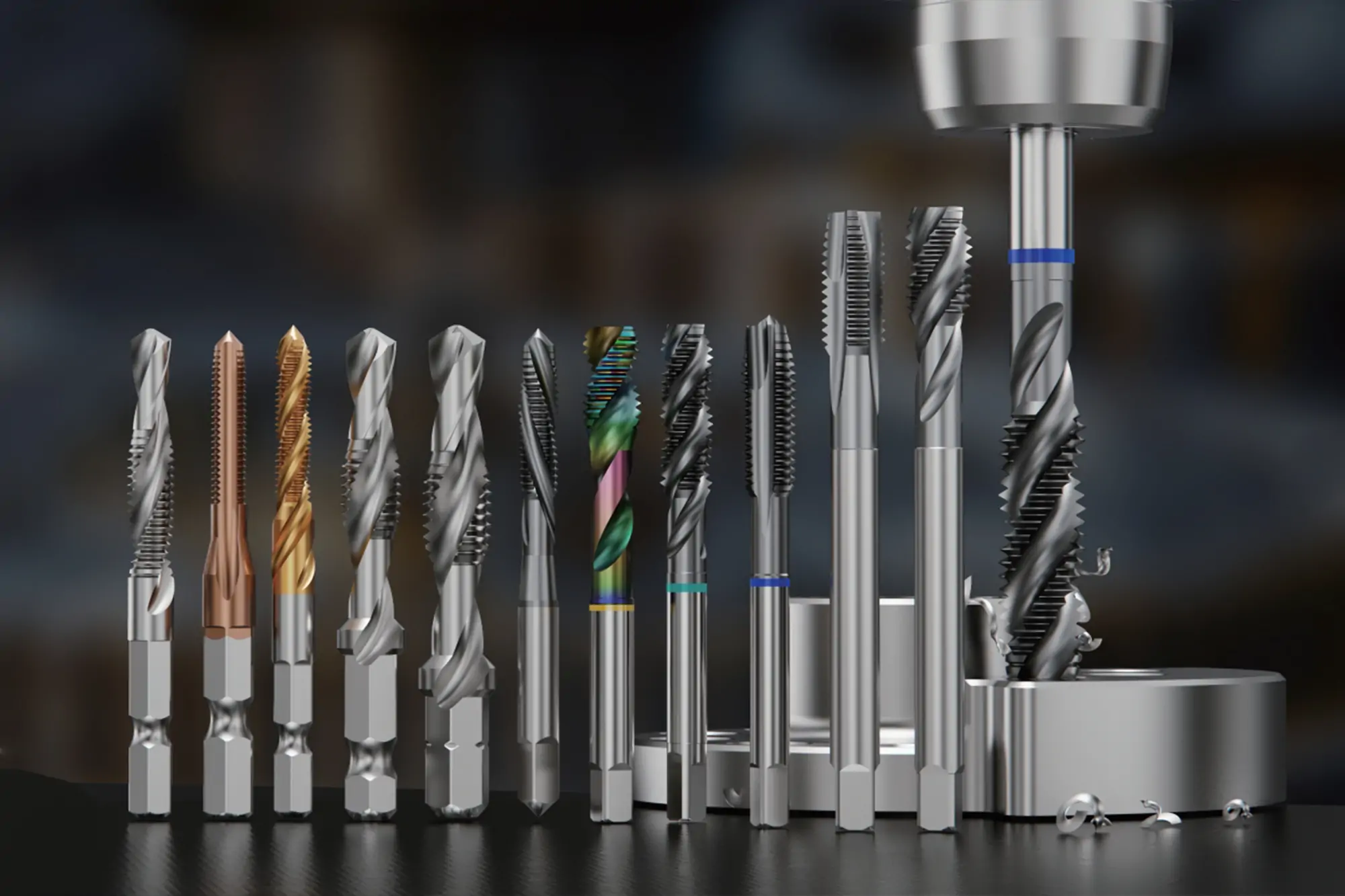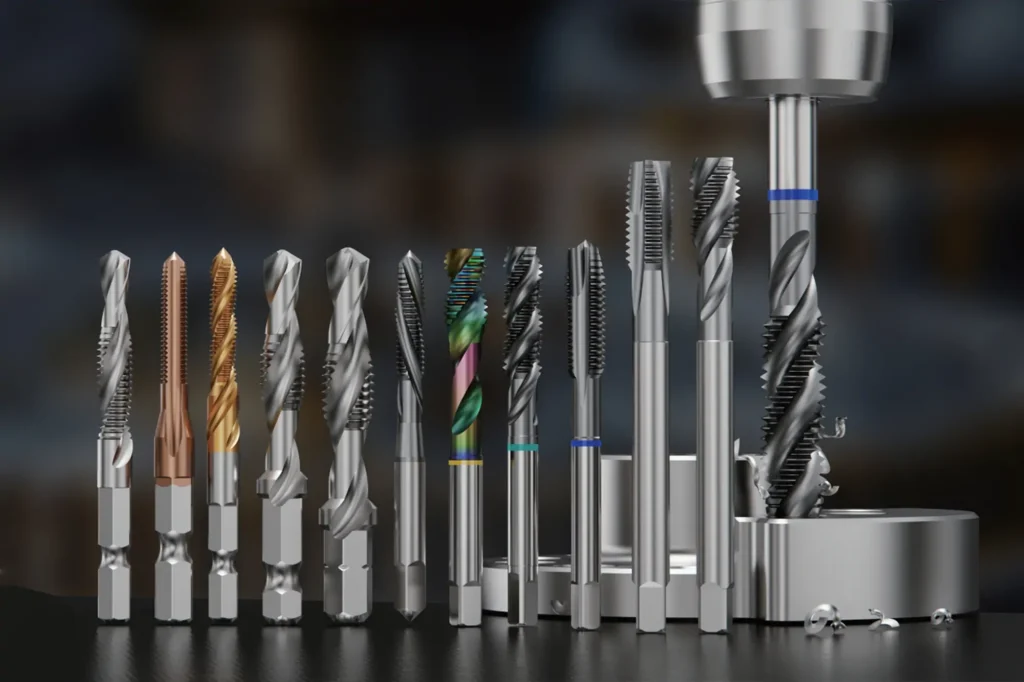When it comes to creating internal threads in metal components, choosing the right type of thread tap is crucial. But with so many variations available, how do you know which tap is best for your specific application?
This comprehensive guide will help you understand the different types of thread taps, their features, advantages, disadvantages, and recommended uses. Let’s dive in.
What is a Thread Tap?
Thread Tap Definition:
A thread tap—also known as a screw tap—is a tool used to cut or form internal threads in a workpiece. These grooves are aligned along the axis and allow bolts or screws to be fastened into metal components.
Thread taps are typically made of high-speed steel (HSS) or carbide, and can be used for both manual tapping and machine-assisted tapping. Due to their simplicity and versatility, taps are essential tools in any workshop for producing small to medium-sized internal threads.
Why Choosing the Right Thread Tap Matters
Tapping is a demanding process because the tool is almost entirely buried in the workpiece. The cutting load per tooth is high, and the tap must manage chip removal effectively. This makes selecting the correct tap critical for performance, tool life, and final thread quality.
Types of Thread Taps
Thread taps can be classified based on various criteria:
1. By Operation Method:
Hand Taps: For manual tapping; made of carbon or alloy tool steel.
Machine Taps: For use on machines; made of high-precision HSS or carbide.
2. By Manufacturing Principle:
Cutting Taps: Remove material to form threads.
Forming Taps: Displace material to form threads without cutting.
3. By Thread Type:
Metric Thread Taps
Metric Fine Thread Taps
Pipe Thread Taps
4. By Design:
Straight Flute Taps
Spiral Flute Taps
Spiral Point Taps
Forming Taps
5. By Standard:
DIN, ISO, JIS, ANSI
6. By Material:
HSS Taps
Cobalt Alloy Taps
Carbide Taps
Let’s explore the most common types of thread taps in detail:
1. Straight Flute Taps
Overview
The most commonly used type, straight flute taps are ideal for general-purpose tapping.
Key Features
Made from HSS or carbide
Commonly available in 2, 4, or 6 cutting edges
Suitable for both through and blind holes
Advantages
Simple structure and affordable
High rigidity
Versatile for many materials and machines
Disadvantages
Poor chip removal
Less suitable for ductile materials like stainless steel
Not ideal for deep holes
Applications
Best for threading hardened steels, cast iron, and standard metal parts
Works well on lathes, drill presses, and tapping machines
2. Spiral Flute Taps
Overview
Designed primarily for blind holes, these taps use spiral grooves to lift chips out of the hole.
Key Features
Right-hand or left-hand spiral options
Common helix angles: 15°–45°
Excellent chip evacuation
Advantages
Longer tool life
Great for deep or blind holes
Effective chip removal
Smooth cutting and reduced torque
Disadvantages
Less suitable for large-size threads
Higher cost than straight flute taps
Applications
Ideal for ductile materials (e.g., stainless steel, aluminum)
Best for blind hole tapping in CNC machining
Commonly used for M3–M36 sizes
3. Spiral Point Taps (Gun Taps)
Overview
These taps have a modified cutting edge that pushes chips forward, making them ideal for through holes.
Key Features
Straight flutes with a pointed cutting lead
Pushes chips out ahead of the tool
Advantages
Fast cutting speed
Excellent thread quality
High strength and durability
Less chip entanglement
Disadvantages
Not suitable for blind holes
Applications
Perfect for through-hole tapping
Suitable for ferrous and non-ferrous metals, including stainless steel
4. Forming Taps (Roll Taps)
Overview
Unlike cutting taps, forming taps use material deformation to create threads—no chips are produced.
Key Features
No flutes; solid body
Relies on material plasticity
Requires pre-hole with accurate diameter
Advantages
High-strength threads
No chip clogging
Smooth thread surface
Long tool life
Disadvantages
Not suitable for hard materials
Threads may have surface grooves—unsuitable for fluid sealing
Applications
Best for aluminum, copper, soft steels
Ideal for applications requiring clean and strong threads
Suitable for blind or through holes
Thread Tap Materials
The material of the tap determines its cutting ability and lifespan:
| Material | Hardness (HRC) | Best For |
|---|---|---|
| HSS (High-Speed Steel) | 62–64 HRC | General use |
| Cobalt Alloy HSS | 67–68 HRC | Harder metals, improved wear |
| Carbide | Up to 80 HRC | High-performance, rigid setups |
Conclusion
Choosing the right thread tap depends on:
Material of the workpiece
Hole type (blind vs through)
Production volume
Required thread strength and accuracy
Whether you’re working with standard steel, non-ferrous metals, or high-hardness alloys, selecting the correct tap type—straight flute, spiral flute, spiral point, or forming tap—will significantly improve performance and thread quality.





